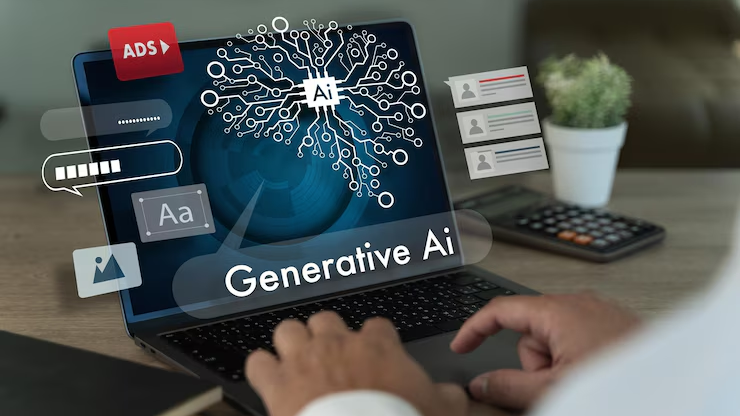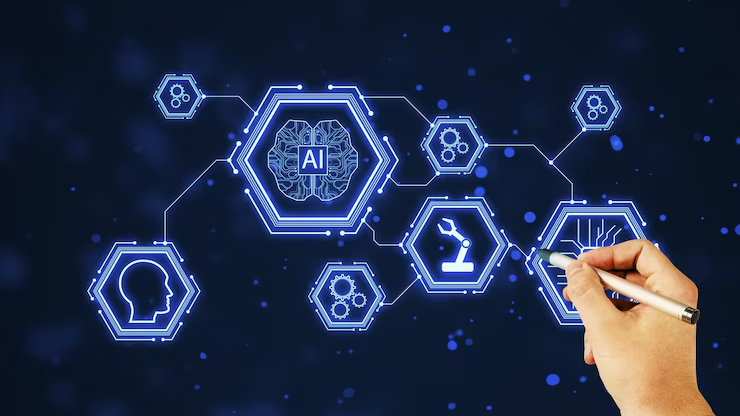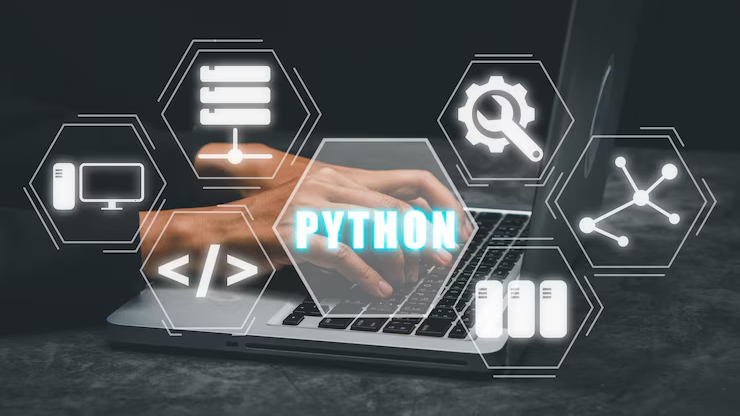ReactJS has revolutionized the way we build web applications, providing developers with the ability to create fast, dynamic user interfaces with ease. If you’re looking to enhance your ReactJS projects, knowing the right libraries to use can make a significant difference. In this article, we’ll explore the top 10 ReactJS libraries that every developer should consider. These libraries will not only streamline your development process but also enhance the performance and functionality of your applications.
1. React Router

React Router is a collection of navigational components that compose declaratively with your application. Whether you are building a single-page application (SPA) or a multipage app, React Router helps manage the routing of your application, making navigation seamless and intuitive.
Why Use React Router?
Declarative Routing: React Router allows you to describe your app’s routes declaratively, meaning you can define routes in a straightforward, easy-to-read manner. This makes your code more maintainable and easier to understand for other developers.
Dynamic Routing: With React Router, you can adjust routes based on the app’s state. This flexibility allows for more dynamic and responsive applications that can change routes as the user interacts with your app.
Nested Routing: Facilitates the creation of complex layouts by allowing you to nest routes. This is particularly useful for applications with a hierarchy of views, as it makes managing and rendering these views much more manageable.
Advanced Features of React Router
Route Matching: React Router offers powerful route matching capabilities that allow you to match parts of the URL with specific components. This is useful for building applications where you need precise control over which components are rendered for which paths.
Code Splitting: React Router integrates seamlessly with React’s code-splitting features, allowing you to load only the necessary components for a given route. This improves performance by reducing the initial load time of your application.
Transition Management: You can manage transitions between routes using React Router’s built-in hooks and components. This allows for smoother navigation experiences and can be used to trigger animations or loading indicators.
2. Redux
Redux is a predictable state container for JavaScript apps. While React has its state management, Redux helps manage the state across your entire application, making it easier to debug and test.
Benefits of Redux
Centralized State: Redux centralizes your app’s state, which can be accessed by any component within your application. This reduces the complexity of passing state through props and makes it easier to manage large applications.
Predictable State Changes: Uses actions and reducers for state transitions, making state changes predictable and easier to follow. This predictability is crucial for debugging and understanding how different parts of your application interact.
Enhanced Debugging: Redux offers powerful tools like Redux DevTools, which allow you to inspect every state change, making it easier to track down bugs and understand how data flows through your application.
Advanced Concepts in Redux
Middleware: Redux middleware allows you to intercept actions before they reach the reducers. This is useful for implementing features like logging, crash reporting, or handling asynchronous operations with libraries like Redux Thunk or Redux Saga.
Selector Functions: Selectors are functions that extract specific pieces of data from the Redux store. They help in keeping your components clean by separating the data retrieval logic from the UI logic.
Immutable State Management: Redux encourages immutable state management, which means creating new state objects instead of modifying existing ones. This practice helps avoid unintended side-effects and makes the state more predictable.
3. Material-UI
Material-UI is a popular React UI framework that follows Google’s Material Design principles. It provides a set of React components that are easy to customize and integrate into your project.
Features of Material-UI
Customizable Themes: Material-UI makes it easy to customize with your own themes, allowing you to create a consistent look and feel across your application that aligns with your brand identity.
Comprehensive Components: Offers a wide range of components from buttons to complex grids, providing you with ready-made building blocks for your UI. This speeds up development and ensures design consistency.
Responsive Design: Built with mobile-first design principles, Material-UI components are inherently responsive, ensuring your application looks great on any device, from mobile phones to large desktop screens.
Advanced Features of Material-UI
Accessibility: Material-UI takes accessibility seriously, with components designed to meet WAI-ARIA specifications. This ensures your application is usable by people with disabilities, broadening your user base.
Custom Styling Solutions: Beyond simple theme customization, Material-UI offers advanced styling solutions like CSS-in-JS with the makeStyles and styled API, giving you fine-grained control over component styles.
Integration with Design Tools: Material-UI integrates well with popular design tools, enabling designers and developers to work more closely together. This can help streamline the design-to-development workflow.
4. React Query

React Query is one of the powerful ReactJS libraries for fetching, caching, and updating data in your React applications. It simplifies data management by handling caching and synchronization efficiently.
Advantages of React Query
Data Fetching: React Query simplifies data fetching logic, allowing you to focus on building your application without worrying about manually handling fetch requests or managing loading states.
Caching Mechanism: Automatically caches data and updates stale data, reducing the number of network requests and improving the performance of your application.
Server State Management: Handles server state seamlessly, providing out-of-the-box solutions for data synchronization and background data fetching.
Advanced Capabilities of React Query
Automatic Refetching: React Query can automatically refetch data when certain conditions change, such as when the window is refocused or when network status changes. This keeps your data fresh and up-to-date without manual intervention.
Optimistic Updates: With React Query, you can implement optimistic updates, where the UI is updated immediately after an action is taken, before the server confirms the change. This enhances the user experience by making the application feel faster.
Paginated and Infinite Queries: React Query supports paginated and infinite queries, making it easier to build applications that deal with large sets of data, such as news feeds or product catalogs.
5. Styled-components
Styled-components allow you to use component-level styles in your application. It helps you write CSS that’s scoped to a single component and does not leak to any other element in the page.
Why Choose Styled-components?
CSS-in-JS: Styled-components let you write CSS in JavaScript, leveraging the power of JS to create dynamic styles. This approach keeps styles co-located with the component logic, improving maintainability.
Dynamic Styling: Apply styles based on props or global themes, allowing for highly customizable and responsive designs that can adapt to different states or user preferences.
Scoped Styles: Styles are automatically scoped to the component, preventing conflicts with other styles in your application and ensuring that styles only apply where they are intended.
Advanced Use Cases for Styled-components
Theming: Styled-components support theming out of the box, allowing you to define a theme and apply it consistently across your application. This is ideal for applications that need to support multiple themes or branding variations.
Global Styles: While styled-components focus on component-specific styles, they also offer a way to define global styles that apply to the entire application. This is useful for setting base styles like typography and spacing.
Server-Side Rendering: Styled-components integrate well with server-side rendering, ensuring that styles are properly rendered on the server and sent to the client with minimal overhead.
6. Axios

Axios is a promise-based HTTP client for making HTTP requests in JavaScript. It’s often used in React projects for data fetching from APIs.
Axios Features
Promise-based: Axios uses promises for HTTP requests, providing a clean and concise syntax for making asynchronous requests and handling responses.
Easy to Use: With its simple API, Axios makes it easy to perform common HTTP operations like GET, POST, PUT, and DELETE, and to handle various response formats.
Interceptors: Axios allows you to intercept requests or responses, enabling you to apply custom logic such as adding authentication tokens to requests or handling errors globally.
Advanced Axios Techniques
Request and Response Transformation: Axios allows you to transform request data before sending it and response data after receiving it. This can be useful for modifying data formats or handling specific API requirements.
Cancellation: Axios supports request cancellation using the AbortController API, allowing you to cancel ongoing requests if they are no longer needed, which can improve application performance and user experience.
Instance Customization: You can create Axios instances with custom configurations, such as base URLs or headers, which can be reused across your application for consistent API interaction.
7. Recharts

Recharts is a composable charting library built on React components. It provides a simple way to create charts with a minimum of setup.
Highlights of Recharts
Composability: Build complex charts with simple components, allowing you to create custom chart layouts by combining different chart elements like lines, bars, and pies.
Built on D3: Recharts utilizes D3’s powerful charting capabilities, ensuring that your charts are both performant and visually appealing, with a wide range of customization options.
Customizable: Easily customize chart components to fit your design needs, including styling, tooltips, legends, and more, providing a tailored data visualization experience.
Advanced Charting with Recharts
Interactive Charts: Recharts supports interactive features like tooltips, legends, and animations, making it easy to create engaging and informative data visualizations.
Responsive Charts: With built-in responsiveness, Recharts ensures that your charts look great on any device, automatically adjusting to different screen sizes and orientations.
Extensibility: Recharts offers a flexible API that allows you to extend and enhance chart components, adding custom functionality or integrating third-party libraries as needed.
8. Formik

Formik is a library that helps with form state management in React. It makes handling form inputs, validation, and submission a breeze.
Formik Benefits
Form Handling: Formik simplifies form state management, providing a structured way to manage form inputs and their associated state, reducing boilerplate code and improving maintainability.
Validation: It integrates seamlessly with validation libraries like Yup, allowing you to define validation schemas and enforce consistent validation rules across your forms.
Ease of Use: Provides simple methods for handling form events, making it easy to manage form submissions, error handling, and input value changes.
Advanced Form Management with Formik
Field-Level Validation: Formik supports field-level validation, enabling you to validate individual fields in isolation, providing instant feedback to users as they interact with the form.
Async Validation and Submission: Formik allows for asynchronous validation and form submission, making it suitable for scenarios where you need to validate data against a server or perform complex submission logic.
Dynamic Forms: With Formik, you can create dynamic forms that change based on user input, such as conditionally displaying fields or sections, making your forms more interactive and user-friendly.
9. Ant Design
Ant Design is a React UI library that provides a set of high-quality components and design resources. It’s widely used in enterprise applications.
Key Features of Ant Design
Comprehensive Components: Offers a wide range of UI components, from basic elements like buttons and inputs to complex components like tables and modals, catering to all your UI needs.
Design System: Follows a well-defined design system, ensuring design consistency across your application and providing a professional look and feel out of the box.
Internationalization: Built-in support for multiple languages, making it easy to create applications that cater to a global audience and support localization requirements.
Advanced Features of Ant Design
Theming and Customization: Ant Design provides robust theming capabilities, allowing you to customize the appearance of components to match your brand or application’s unique style.
Enterprise-Grade Components: Designed with enterprise applications in mind, Ant Design components are optimized for performance and scalability, making them suitable for large, complex applications.
Accessibility and Usability: Ant Design emphasizes accessibility and usability, with components designed to meet industry standards, ensuring that your application is inclusive and user-friendly.
10. React Bootstrap
React Bootstrap is a library that provides Bootstrap components built with React. It combines the power of Bootstrap’s styling with React’s component-based architecture.
Why Use React Bootstrap?
Bootstrap Integration: Integrates Bootstrap with React components, allowing you to use familiar Bootstrap styles and utilities within a React application, providing a quick and easy way to build responsive layouts.
Customizable: Easily customize Bootstrap styles using Sass variables or custom CSS, enabling you to tailor the look and feel of your application to meet specific design requirements.
Responsive Layouts: Leverage Bootstrap’s responsive grid system to create layouts that adapt to different screen sizes, ensuring a consistent user experience across devices.
Advanced Usage of React Bootstrap
Component Overriding: React Bootstrap allows you to override default component styles and behaviors, giving you full control over the appearance and functionality of your UI elements.
Modular Design: With React Bootstrap, you can import only the components you need, reducing the bundle size and improving the performance of your application.
Integration with Bootstrap Themes: React Bootstrap works seamlessly with third-party Bootstrap themes, allowing you to quickly apply pre-designed themes to your application, saving time and effort in UI development.
Conclusion
When building applications with ReactJS, having the right set of libraries can significantly enhance your development workflow. The libraries discussed in this article are widely used and respected within the React community, offering powerful features that can help you create robust, scalable applications. Whether you’re looking to manage state, enhance UI, or streamline data fetching, there’s a ReactJS library to meet your needs. By incorporating these libraries into your projects, you can take full advantage of ReactJS’s capabilities and deliver high-quality applications.
Consider hiring ReactJS developers who are familiar with these libraries to further optimize your project. Experienced developers can help you navigate the complexities of these tools, ensuring that you leverage their full potential. For those just starting, diving into a ReactJS tutorial can also be a great way to understand how these libraries integrate and function within your applications. Tutorials can provide hands-on experience and practical examples that make learning these libraries easier and more engaging.






















































